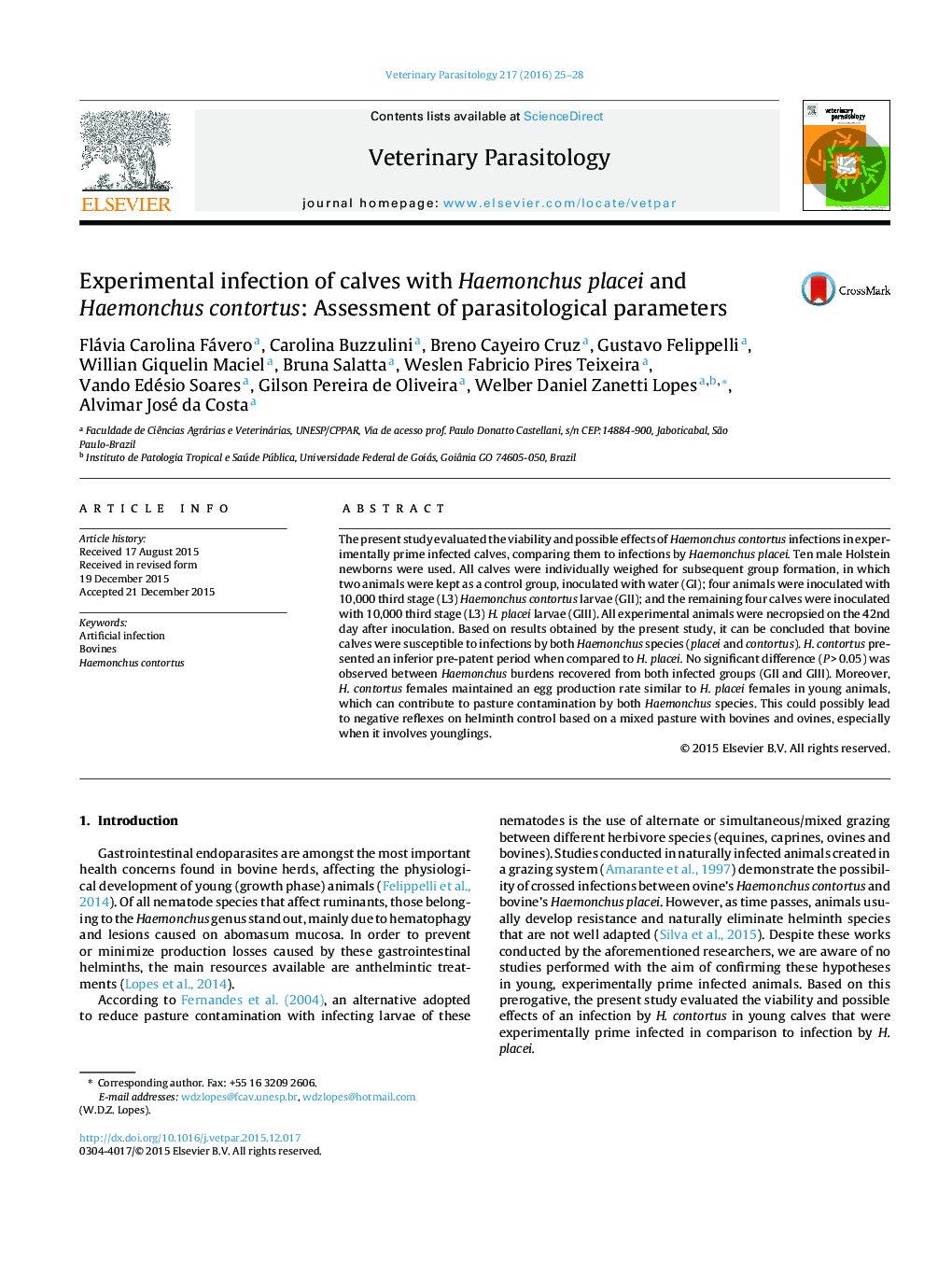| Article ID | Journal | Published Year | Pages | File Type |
|---|---|---|---|---|
| 2469931 | Veterinary Parasitology | 2016 | 4 Pages |
•We evaluated the viability of Haemonchus contortus and H. placei infections in calves.•Calves were susceptible to infections by both Haemonchus species.•Discrete submandibular edema was observed on animals from both infected groups.•H. contortus presented an shorter pre-patent period when compared to H. placei.
The present study evaluated the viability and possible effects of Haemonchus contortus infections in experimentally prime infected calves, comparing them to infections by Haemonchus placei. Ten male Holstein newborns were used. All calves were individually weighed for subsequent group formation, in which two animals were kept as a control group, inoculated with water (GI); four animals were inoculated with 10,000 third stage (L3) Haemonchus contortus larvae (GII); and the remaining four calves were inoculated with 10,000 third stage (L3) H. placei larvae (GIII). All experimental animals were necropsied on the 42nd day after inoculation. Based on results obtained by the present study, it can be concluded that bovine calves were susceptible to infections by both Haemonchus species (placei and contortus). H. contortus presented an inferior pre-patent period when compared to H. placei. No significant difference (P > 0.05) was observed between Haemonchus burdens recovered from both infected groups (GII and GIII). Moreover, H. contortus females maintained an egg production rate similar to H. placei females in young animals, which can contribute to pasture contamination by both Haemonchus species. This could possibly lead to negative reflexes on helminth control based on a mixed pasture with bovines and ovines, especially when it involves younglings.
